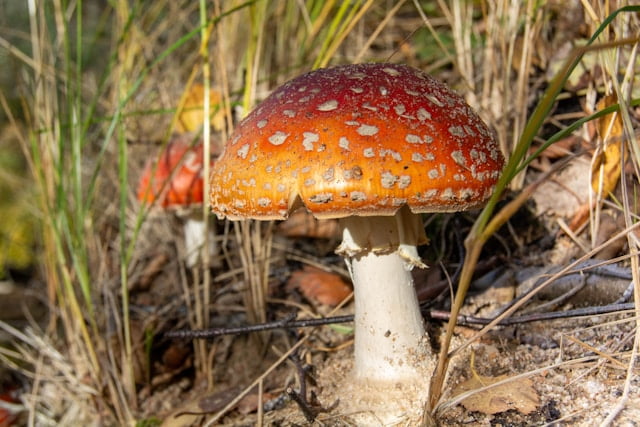The Secret to Staying Forever Young with Mushrooms
Mushrooms are versatile fungi enjoyed in various cuisines worldwide, with many commercially grown varieties, though caution is advised due to toxicity risks.
Using mushrooms in our diet is one of the best ways to get nutrition easily, as mushrooms naturally contain many nutritional elements. Medical experts have called it a food rich in nutrition, containing proteins, beta-glucans, minerals, and micronutrients. Recent research has shown that mushrooms help in the creation of stem cells and in correcting Vitamin D deficiencies.

What are the Mushrooms Benefits
Let’s explore its benefits and characteristics related to skin. Mushrooms are one of those rare foods that are a source of Vitamin D and are low in calories. Mushrooms are rich in antioxidants that can be used to fight aging and keep the body healthy. In addition, its regular use keeps the skin safe from environmental pollution.
Mushrooms hydrate our skin and protect us from skin issues like acne, as mushrooms have anti-aging properties. They are known as natural moisturizers and are included in many serums applied to the face.
You can get Vitamin D from it, and when exposed to UV light, mushrooms produce Vitamin D, which helps in protecting heart health. Riboflavin is good for red blood cells, and Vitamin B is also very useful in maintaining digestion and healthy skin. It is low in calories, with only twenty calories found in one mushroom, and eating it can keep your stomach full for a longer time, reducing your appetite and helping you lose weight.
The Benefits of Mushrooms: A Natural Source of Selenium
Mushrooms are a great source of selenium, which acts as an antioxidant in the body. It protects against damage caused by free radicals and helps strengthen the immune system, potentially aiding in the prevention of cancer and other diseases. Unlike other fruits and vegetables, mushrooms contain a higher amount of potassium, with certain varieties like brown mushrooms having more potassium than bananas.

Studies have revealed that mushrooms contain significant levels of ergothioneine and glutathione, natural compounds that are beneficial in slowing down the aging process. If you have any concerns or issues related to your skin or any skin-related diseases, it is advisable to consult a dermatologist.
Recent research has shown that mushrooms have extremely high levels of two antioxidants, making them a potent source of these compounds known for their anti-aging properties. These antioxidants work together synergistically, making mushrooms the best dietary source when consumed together.
They help combat oxidative stress in your cells, a type of damage that can harm and disrupt your cells, leading to aging. Oxidative stress also plays a crucial role in the possibility of Alzheimer’s, cancer, and heart disease. These two compounds found in mushrooms aid in reducing the risk of heart and Alzheimer’s diseases.
Edible mushrooms commonly available, including:
- Agaricus bisporus: Also known as white, crimini, or portobello mushrooms, they’re widely cultivated in controlled environments and considered safe for consumption.
- Hericium erinaceus: Also called lion’s mane mushroom, known for its unique appearance and mild flavor, often used in Asian cuisines.
- Shiitake: A popular mushroom in Asian cooking, prized for its rich, savory taste and health benefits.
- Maitake (Hen-of-the-woods): Recognized for its distinctive clustered appearance and earthy flavor, commonly used in Japanese and Chinese dishes.
- Pleurotus (Oyster mushroom): Versatile mushrooms with a delicate flavor, available in various colors and sizes, commonly used in cooking worldwide.
- Enoki: Small, slender mushroom with a mild flavor and crunchy texture, often used in soups and salads in Asian cuisine.
How to Store Mushrooms Safely
The best way to store mushrooms is to pack them in brown paper bags and place them in the lower part of the refrigerator, or use cloth bags. The stem of the mushroom is a rich source of essential nutrients and fiber, so there’s no need to separate them. If you want to remove them from a dish, cut them into small pieces and use them in soups and other dishes.
Exercise caution when it comes to wild mushrooms, as many of them can be poisonous and dangerous to life. Therefore, it’s advisable to purchase them from a reputable store.
what mushroom are safe to eat
Toxic Mushrooms - Toxins and Effects
| Toxin | Toxicity | Effects |
|---|---|---|
| Alpha-Amanitin | Deadly | Causes often fatal liver damage 1–3 days after ingestion. Principal toxin in the death cap. |
| Phallotoxin | Non-lethal | Causes extreme gastrointestinal upset. Found in various mushrooms. |
| Orellanine | Deadly | Redox cycler similar to paraquat. Causes kidney failure within three weeks after ingestion. Principal toxin in genus Cortinarius. |
| Muscarine | Potentially deadly | Causes SLUDGE syndrome. Found in various mushrooms. Antidote is atropine. |
| Monomethylhydrazine (MMH) | Deadly | Causes brain damage, seizures, gastrointestinal upset, and hemolysis. Metabolic poison. Principal toxin in genus Gyromitra. Antidote is large doses of intravenous pyridoxine hydrochloride. |
| Coprine | Non-lethal | Causes illness when consumed with alcohol. Principal toxin in genus Coprinus. |
| Ibotenic acid | Potentially deadly | Excitotoxin. Principal toxin in Amanita muscaria, A. pantherina, and A. gemmata. |
| Muscimol | Potentially deadly | Causes CNS depression and hallucinations. Principal toxin in Amanita muscaria, A. pantherina, and A. gemmata. |
| Arabitol | Non-lethal | Causes diarrhea in some people. |
| Bolesatine | Non-lethal | Causes gastrointestinal irritation, vomiting, nausea. |
| Ergotamine | Deadly | Affects the vascular system and can lead to loss of limbs and/or cardiac arrest. Found in genus Claviceps. |


Comments